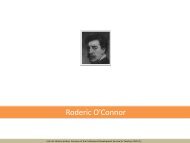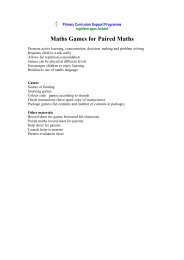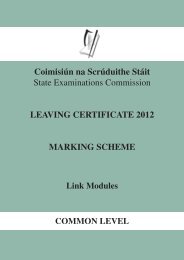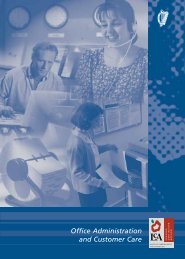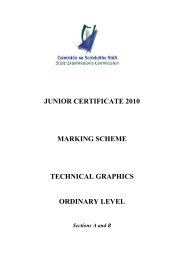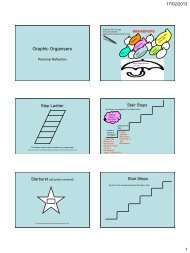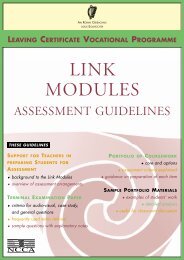What is Four in Balance? - PDST
What is Four in Balance? - PDST
What is Four in Balance? - PDST
You also want an ePaper? Increase the reach of your titles
YUMPU automatically turns print PDFs into web optimized ePapers that Google loves.
2 - Benefits of us<strong>in</strong>g ICTfor example, they must be able to use the words they have learned <strong>in</strong> alanguage-rich context (Suhre, 2008; Corda, 2010).In short, it <strong>is</strong> prec<strong>is</strong>ely when ICT enables pupils to work more<strong>in</strong>dependently, that pupils <strong>in</strong> fact need the teacher’s <strong>in</strong>put more than ever.ICT does not replace the teacher but rather creates new relationships,between the pupil, the subject matter, the ICT application itself, and theteacher. It ra<strong>is</strong>es questions about the balance between pupils work<strong>in</strong>g<strong>in</strong>dependently, the amount of control exerc<strong>is</strong>ed by the software, and theamount of control that the teacher has over the learn<strong>in</strong>g process.2.5 Inquiry-based learn<strong>in</strong>gInquiry-based learn<strong>in</strong>g means teach<strong>in</strong>g methods <strong>in</strong> which pupils are moreor less free to look up the answer to a question, search for <strong>in</strong>formationabout a topic, study a concept, or develop skills. The problems they aretold to <strong>in</strong>vestigate are often complex ones that can be answered <strong>in</strong> severalways. The process – that <strong>is</strong>, how the pupil arrives at the solution – <strong>is</strong> oneof the learn<strong>in</strong>g objectives.ICT can offer considerable advantages <strong>in</strong> th<strong>is</strong> respect, but as <strong>in</strong> the caseof practice programs, applications that support <strong>in</strong>quiry-based learn<strong>in</strong>grequire at the very least a prec<strong>is</strong>e, professional, and pedagogicallyrelevant design…as well as the constant attention of the teacher.Computer simulationsComputer simulations enable pupils to experiment <strong>in</strong> an environment –a model – that imitates reality. They give pupils the chance to developpractical skills, for example learn<strong>in</strong>g about dredg<strong>in</strong>g with a dredg<strong>in</strong>gsimulator (Oomens, 2011), or to familiarize themselves with the basicpr<strong>in</strong>ciples of research, such as develop<strong>in</strong>g a hypothes<strong>is</strong> (De Jong, 2009).Games may also be classified as computer simulations. Some games aredeveloped especially for the education sector, but pupils can even learnfrom store-bought games if they have a good teacher (Van Rooij, 2010a;Verheul, 2009; Claessens, 2011a).25



